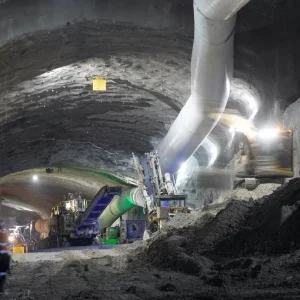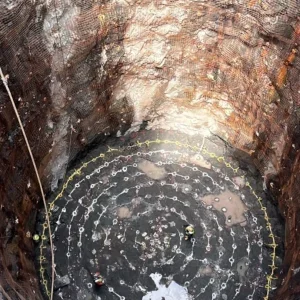A significant breakthrough was achieved at the beginning of last month on the 1.5km long Göta twin-tube road tunnel in Gothenburg, Sweden, being constructed by drill and blast.
Vägverket Production, the construction arm of the Swedish National Road Administration, completed the first of two southern drives, marking 80% completion of blasting work. The first northern drive will be completed next month, and blasting on the other two drives completed by January 2004.
Construction on the tunnels started in November 2000 with the excavation of two access tunnels close to the centre of the alignment. These were each about 300m long, 5m wide and 8m high.
Two Atlas Copco 353 boomers and one CAT 980G are being used to build the main tunnels, which are 16m wide and 8m high, with three traffic lanes in each. Cross-passages will link the tunnels every 100m. At its lowest point, the tunnel runs under the Great Harbour Canal, where it is 30m below sea level.
One kilometre is being constructed in rock, while a 150m cut and cover section will link it to the road network at the eastern portal, and 350m of cut and cover at the western portal.
Controlling water ingress is an important factor of the tunnel construction, and the client has specified that water leakage into the tunnel must not exceed 0.7l/100m/min (or, approximately 20l/hr throughout the entire length of the tunnel). Measures taken include pre-injection grouting, involving the drilling of 70-80 holes around the tunnel’s crown. Permanent reinforcement involves reinforced injection concrete and roof bolts.
The US$350M project forms part of a 3km road project designed to ease congestion on the streets of Gothenburg, and give easier access to the harbour. The tunnels should be open to traffic at the end of 2005.







